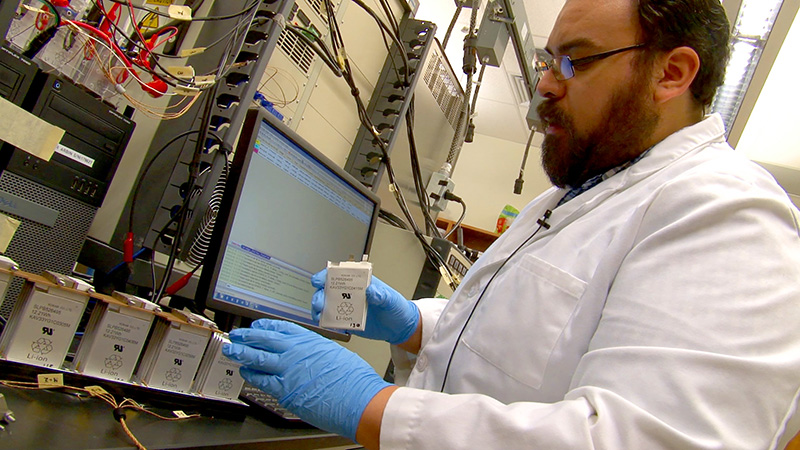May 11, 2018 | News Brief | A Purdue University team has published research that examines the relationship between the active and inactive elements of lithium-ion batteries, and how the micro- and nano-structure of their respective ingredients reflects on the performance and safety of the batteries.
“Rechargeable batteries are everywhere,” said Partha Mukherjee, associate professor of mechanical engineering, and principal investigator of the research. “We probably carry two or three portable electronics with us at all times. But the interactions between the different elements of the battery itself are still not clearly understood. My research hopes to bridge that gap.”

In Mukherjee’s lab, the Energy and Transport Sciences Laboratory (ETSL), researchers study all forms of energy transport and storage, including batteries and fuel cells. They use computer modeling to propose new configurations of the constituent elements involved and then test different phenomena in the lab. A YouTube video is available at https://www.youtube.com/watch?v=_mK_mDmhjIg.
“It’s like baking a cake,” said Aashutosh Mistry, a Ph.D. candidate in mechanical engineering. “How much dough should you use? How much cherry should you put in so that it tastes nice? In the same way, we look at the fundamental proportions, or the recipe, of these battery electrodes. Anything you change on the microscale ends up affecting the overall performance.”
“Let’s take electric vehicles, for example,” said Mukherjee. “People are interested in three things. Performance: how fast can I drive my car? Life: how long can I drive my car before recharging it? And finally, safety concerns. We’ve seen these batteries fail publicly, in spectacular ways, exploding in smartphones and electric cars. So, all three of these aspects – performance, life, and safety – are very important. It can be a tricky balance getting everything just right.”
“The temperature and pressure inside one cell got so high, it melted the metal casing, which caught fire,” said Ph.D. candidate Daniel Robles, as he held a plastic bag of the charred remains. “In an electric car, there are several thousand of these cells, and these are located underneath your seat! That’s why it’s important to understand the fundamentals of these phenomena, so we can prevent it from happening.”
Rechargeable batteries typically contain a positive electrode and a negative electrode, consisting of “active material” to store lithium. Between the two electrodes is a separator, and there is liquid electrolyte throughout, to transport lithium ions. Finally, a combination of electrochemically inactive materials, such as conductive additives and binders (called the “secondary phase”) helps to shape the physical ingredients in the composite porous electrodes and enhance the electrical conductivity. In the published research, Mukherjee and his team examine the relationship between the active material and secondary phase on the micro- and nano-scale – the porosity, the physical shapes, and their interactions with each other. Altering any of these characteristics results in significant changes in the battery’s overall performance.
“We’re still at a nascent stage in understanding these complex interactions,” Mukherjee said. “But that’s the key to our research. We connect what’s happening at the micro- and nano-scale to the battery’s performance, life, and safety.”
And as rechargeable batteries become more prevalent, their research becomes even more vital. “Batteries are being used everywhere, from portable electronics to vehicles, and even in large-scale electrical grids. This is a great and exciting time to do research in energy storage.”







